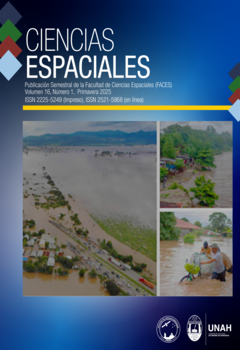Desempeño de modelos de inundación 2023: evaluación de 29 sitios críticos en Valle de Sula
DOI:
https://doi.org/10.5377/ce.v16i1.20506Keywords:
Floodplains, Disaster Risk Reduction, Hydraulic modeling, Nash-SutcliffeAbstract
In November 2020, the devastation caused by Tropical Storms Eta and Iota left thousands of families affected, with significant infrastructure losses and a high risk of future disasters for the municipalities of the Sula Valley. Increasing risk awareness regarding flood threats in this area is particularly important for urban resilience, as it is the economic engine of Honduras, generating 30% of the country’s gross domestic product.
The main objective of this research was to validate and confirm the accuracy, completeness, and reliability of floodplains obtained through hydrological and hydraulic modeling in the Chamelecón and Ulúa river basins, which are distributed throughout the Sula Valley. To achieve this, the performance of the models was evaluated using the Nash-Sutcliffe efficiency coefficient, comparing the results with participatory field observations. These observations were based on previously defined variables such as water depth, duration, and flow velocity. The research incorporated the design of modern tools for data collection and evaluation (such as KoboToolbox), as well as participatory processes with key stakeholders and specialized platforms for hydrological modeling. Through this methodology, 29 critical sites in the Sula Valley were analyzed.
Finally, the review of the data collected on water levels in the most affected areas allowed for the calibration of the hydraulic-river model. After adjusting the roughness parameters, its performance was validated using the Nash-Sutcliffe Efficiency (NSE) coefficient, which indicated a good level of accuracy.
Downloads
Downloads
Published
How to Cite
Issue
Section
License
Copyright (c) 2025 Ciencias Espaciales

This work is licensed under a Creative Commons Attribution-NonCommercial-ShareAlike 4.0 International License.




